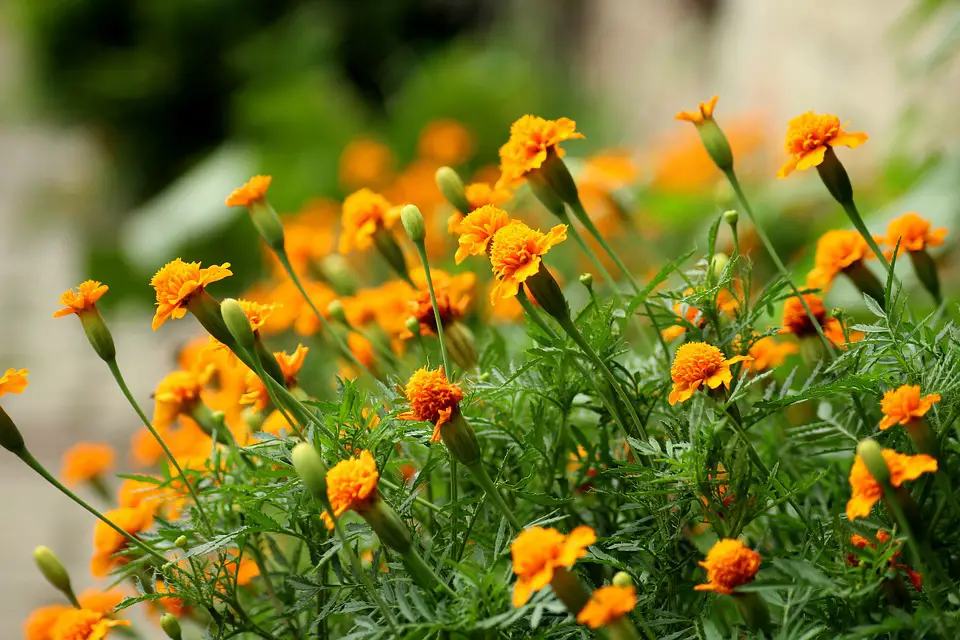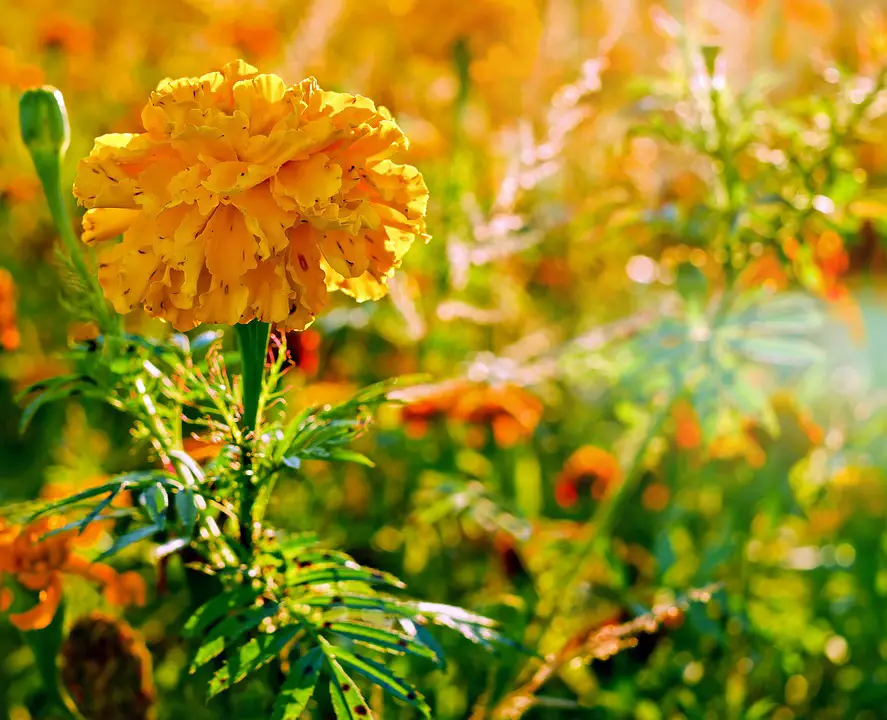We use affiliate links to run our site. When you buy through links on our site, we may earn an affiliate commission, without any added cost to you. Learn more
If you’re looking for a cheerful addition to your home that’s easy to care for, look no further than the marigold. These vibrant flowers are not only beautiful but also have many benefits.
Marigolds are also known for their ability to deter pests, so planting them in your garden can help keep your other plants healthy. These cheerful flowers are also easy to grow at home. With just a little bit of planning, you can have marigolds blooming in no time.
Here in this post, we will discuss a few simple but effective ways to grow marigolds at home. So let’s get started.
why you should grow marigolds at home
Marigolds are not only beautiful and add color and life to any garden, but they also serve a purpose. Marigolds are known to be natural pest deterrents.
Here are the main reasons why you should definitely consider growing marigolds at home.
- Their strong scent confuses and deters many common garden pests, such as nematodes, whiteflies, and even rabbits!
- Interestingly, marigold flowers can attract beneficial insects such as ladybugs, parasitic wasps, and lacewings.
- They are available in numerous varieties. Though Marigold represents a single type of flower their variety is endless. They can be single or double and come in many colors which can range from orange, yellow, bi-color even white.
- They can easily brighten up any garden.
- Marigolds help eliminate nematodes from your garden.
- Marigolds are also good companion plants for tomatoes and other veggies.
- And finally, growing marigolds at home is super easy and requires very little effort.
Marigold Growing In A Nutshell:
| Aspect | Requirement |
| Botanical Name | Tagetes spp. |
| Plant Type | Flower |
| Sun Exposure | Full Sun, Part Sun |
| Soil pH | Neutral |
| Bloom Time | Spring, Summer, Fall |
| Flower Color | Multicolor, Red, White, Orange, Yellow |
| Special Features | Attracts Butterflies |
| Watering | Allow soil to dry between waterings |
| Soil Type | Moderately fertile, well-drained |
| Planting Time | Spring (for African marigolds), Spring to midsummer (for French and signet marigolds) |
| Starting Method | French marigolds – seed, African marigolds – young plants |
| Fertilization | Avoid nitrogen-rich fertilizers during growth |
| Pinching | Pinch off tops to encourage bushier growth |
| Deadheading | Optional, but removing dying blossoms encourages more blooming |
| Watering Technique | Water at the base, avoid overhead watering |
| Powdery Mildew | Avoid wet conditions, keep leaves dry |
| Pests/Diseases | Spider mites, aphids, powdery mildew |
| Companion Plants | French marigolds as companion plants to repel nematodes attacking vegetables |
| Harvesting | Strip foliage for dried floral arrangements |
| Overall Hardy | Marigolds grown from seed are hardier |
How To Grow Marigold
Like most other plants Marigold can be grown both from transplants and from seeds. Although you can easily buy seedlings from your local nursery shops, you can use a much cheaper option of starting from seeds.
If you are growing from seeds try planting a few months prior to the frosting date. Use soil-less media to fill seedling trays.
Put the seeds and cover them with the mixture. Then cover the tray with plastic wrap and keep them in a warm place. You don’t require any sunlight for seed germination.

It generally takes 3-4 days for germination but you should check the tray every day to see any sign of germination.
Once you see the germination remove the plastic cover and move the tray into the sunlight. Once they develop two sets of true leaves you can transplant them to their permanent pots or in the garden.
The best thing about growing marigolds is you don’t need to think much about the soil. They generally grow in any kind of soil, provided it is well-drained and has some nutrients in it.
Plant them in a place that receives a sufficient amount of Sunlight and chances are that you will get a good amount of yield.
How to Take Care of A Marigold Plant:
Marigold is a plant that requires very little care. You just need to provide them with water regularly so that the soil doesn’t go dry. Depending on the variety you may need to put some support to protect them from strong winds.

While growing the plant you need to remove the dead stems and leaves from the plant so that seeds and flowers can grow easily. Unlike Tomatoes or
Marigold Pests and Prevention:
Marigold plants have a pungent odor which helps them repel pests. So in most cases, you probably would not need any pest control system from outside.
Besides, the roots of the plant help in reducing the nematode population beneath the soil. Due to this unique property, marigold plants are used in companion planting.
Conclusion:
In conclusion, growing marigolds at home is simple and effective. By following the tips in this article, you can have success in growing these beautiful flowers. With a little time and effort, you can enjoy the beauty of marigolds in your own garden.
So what are you waiting for? Get out there and start growing!
What Do you think about the article? Please post them below in the comment box. We are eager to know from you.

Amazon and the Amazon logo are trademarks of Amazon.com, Inc, or its affiliates.

1 thought on “How To Grow Marigolds: An Essential Guide For Growing Marigold Plants”